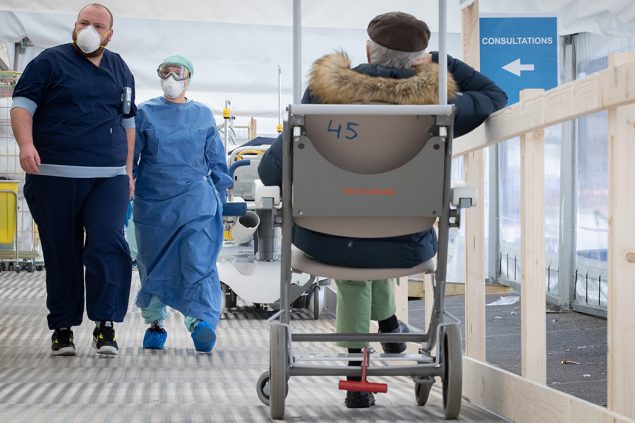The average of new people who tested positive for the coronavirus and the number of hospitalisations decreased over the past week in Belgium, but the number of deaths continues to rise, according to Sciensano’s latest figures on Tuesday.
Between 31 October and 6 November, an average of 8,260.1 new people tested positive per day over the past week, which is a 46% decrease compared to the week before.
The total number of confirmed cases in Belgium since the beginning of the pandemic is 503,182. The total reflects all people in Belgium who have been infected, and includes confirmed active cases as well as patients who have since recovered, or died as a result of the virus.
Over the past two weeks, 1,433.1 infections were confirmed per 100,000 inhabitants, a decrease of 2% compared to the two weeks before.
Related News
- 'Not that simple': De Croo government drops coronavirus barometer
- Over 80% of Belgian hospitals pleads for one, not nine health ministers
- What to do if your housemate has to quarantine
Between 3 and 10 November, an average of 574.4 patients was admitted to hospital, down from a daily average of 620.1 the week before.
In total, 7,217 coronavirus patients are currently admitted to hospital, 266 more than yesterday. Of those patients, 1,474 are currently in intensive care, which is four more than the day before. Patients on a ventilator number 881 – seven fewer than yesterday.
From 31 October to 6 November, an average number of 179.1 deaths occurred per day, up from the daily average of 154 the week before.
The total number of deaths in the country since the beginning of the pandemic is currently 13,216 – 161 more than yesterday.
Since the start of the pandemic, a total of over 5.3 million tests have been carried out. Of those tests, 41,400 were taken over the past week, with a positivity rate of 24.4%. This means that just under a quarter of the people who get tested receive a positive result.
The percentage went down from 27.3% last week, and coincides with a 34% fall in the number of tests being carried out, after the authorities decided not to test patients with no symptoms.
Since 21 October, only people with coronavirus symptoms are being tested. That means that some new infections, which used to be detected, are missing in the statistics, Sciensano said. The public health institute will use statistical models to calculate those infections that are not registered under the new testing strategy.
The reproduction rate, meanwhile, has been coming down since 23 October, and now stands at 0.89. That rate (Rt) is the rate at which the virus spreads. Since it is now below 1.0, the virus seems no longer to be growing in the population.
Maïthé Chini
The Brussels Times

